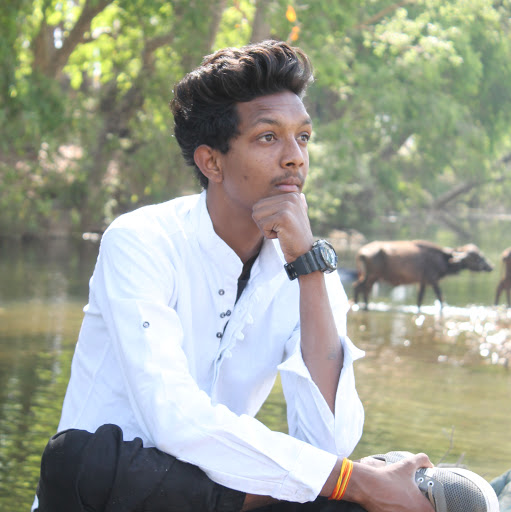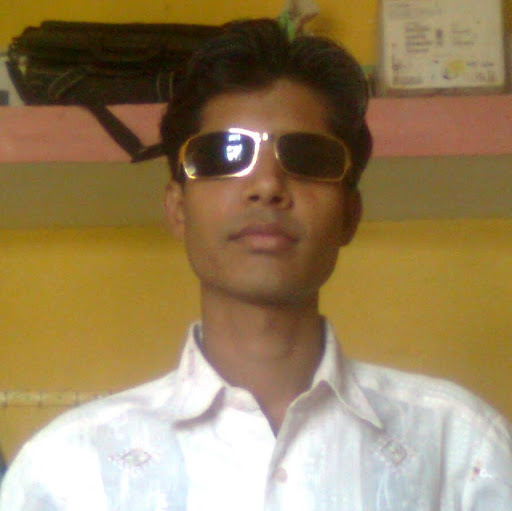Jinesh J Jain
age ~48
from Cupertino, CA
- Also known as:
-
- Jinesh Jitendrakumar Jain
- Jinesh Jitendra Kumar
- Jain Mansi Jinesh
- Jain Jinesh Kumar
- Jain J Jinesh
- Phone and address:
- 10173 Santa Clara Ave, Cupertino, CA 95014
Jinesh Jain Phones & Addresses
- 10173 Santa Clara Ave, Cupertino, CA 95014
- Oakland, CA
- Santa Clara, CA
- San Jose, CA s
- 8121 Long Nook Ln, Charlotte, NC 28277
- Richland, WA
- Memphis, TN
- Kennewick, WA
Name / Title
Company / Classification
Phones & Addresses
Vice-President
Tellus Solutions, Inc
Information Technology and Services · Prepackaged Software Services Custom Computer Programing Computer Systems Design · Prepackaged Software Srvcs
Information Technology and Services · Prepackaged Software Services Custom Computer Programing Computer Systems Design · Prepackaged Software Srvcs
3350 Scott Blvd BLDG 34A, Santa Clara, CA 95054
1931 Bowers Ave, Santa Clara, CA 95051
16830 Ventura Blvd, Van Nuys, CA 91436
408 850-2942
1931 Bowers Ave, Santa Clara, CA 95051
16830 Ventura Blvd, Van Nuys, CA 91436
408 850-2942
President
J & S MANAGEMENT SERVICES, INC
1931 Bowers Ave, Santa Clara, CA 95051
Us Patents
-
Calibration For A Distributed System
view source -
US Patent:20220405573, Dec 22, 2022
-
Filed:Jun 18, 2021
-
Appl. No.:17/351404
-
Inventors:- Dearborn MI, US
Nikita Jaipuria - Union City CA, US
Jinesh Jain - Pacifica CA, US -
Assignee:Ford Global Technologies, LLC - Dearborn MI
-
International Classification:G06N 3/08
G06N 3/04
H04L 29/08 -
Abstract:A first computer can operate a first instance of a neural network, receive a first data set input to the first instance of the neural network, determine a first calibration parameter for the neural network in the first instance of the neural network based on the first data set, and send the first calibration parameter to a server computer. A second computer can operate a second instance of the neural network, receive a second data set input to the second instance of the neural network, determine a second calibration parameter for the neural network in the second instance of the neural network based on the second data set, and send the second calibration parameter to the server computer. A server computer can aggregate the first and second calibration parameters to update a model of the neural network and update the neural network model for the first and second instances of the neural network at the first and second computers based on the aggregated first and second calibration parameters.
-
Unseen Environment Classification
view source -
US Patent:20220234617, Jul 28, 2022
-
Filed:Jan 26, 2021
-
Appl. No.:17/158088
-
Inventors:- Dearborn MI, US
Sowndarya Sundar - Mountain View CA, US
Jinesh Jain - Pacifica CA, US -
Assignee:Ford Global Technologies, LLC - Dearborn MI
-
International Classification:B60W 60/00
G06F 16/28
G06N 3/04
G06N 3/08
B60W 50/00
B60W 30/095
B60W 30/09
B60W 40/06 -
Abstract:A system comprising a computer including a processor and a memory, the memory including instructions such that the processor is programmed to: process vehicle sensor data with a deep neural network to generate a prediction indicative of one or more objects based on the data and determine an object uncertainty corresponding to the prediction and when the object uncertainty is greater than an uncertainty threshold, segment the vehicle sensor data into a foreground portion and a background portion. Classify the foreground portion as including an unseen object class when a foreground uncertainty is greater than a foreground uncertainty threshold; classify the background portion as including unseen background when a background uncertainty is greater than a background uncertainty threshold; and transmit the data and a data classification to a server.
-
Real-Time Neural Network Retraining
view source -
US Patent:20220207348, Jun 30, 2022
-
Filed:Dec 29, 2020
-
Appl. No.:17/136565
-
Inventors:- Dearborn MI, US
Jinesh Jain - Pacifica CA, US -
Assignee:Ford Global Technologies, LLC - Dearborn MI
-
International Classification:G06N 3/08
G06N 3/04
G06N 20/10
B60W 50/00
B60W 10/04
B60W 10/18
B60W 10/20 -
Abstract:A system comprising a computer including a processor and a memory, the memory including instructions such that the processor is programmed to: determine whether a difference between a friction coefficient label and a determined friction coefficient corresponding to an image depicting a surface is greater than a label threshold; modify the determined friction coefficient to equal the friction coefficient label when the difference is greater than the label threshold; and retrain a neural network using the image and the friction coefficient label.
-
Enhanced Target Detection
view source -
US Patent:20230128947, Apr 27, 2023
-
Filed:Oct 25, 2021
-
Appl. No.:17/509227
-
Inventors:- Dearborn MI, US
Nikita Jaipuria - Union City CA, US
Jinesh Jain - Pacifica CA, US
Vidya Nariyambut Murali - Sunnyvale CA, US -
Assignee:Ford Global Technologies, LLC - Dearborn MI
-
International Classification:B60W 40/04
B60W 30/09
G06T 7/50
G06T 7/20 -
Abstract:Image data are input to a machine learning program. The machine learning program is trained with a virtual boundary model based on a distance between a host vehicle and a target object and a loss function based on a real-world physical model. An identification of a threat object is output from the machine learning program. A subsystem of the host vehicle is actuated based on the identification of the threat object.
-
Enhanced Object Detection With Clustering
view source -
US Patent:20210256321, Aug 19, 2021
-
Filed:Feb 14, 2020
-
Appl. No.:16/791084
-
Inventors:- Dearborn MI, US
Jinhyoung Oh - Union City CA, US
Jinesh Jain - Palo Alto CA, US -
Assignee:Ford Global Technologies, LLC - Dearborn MI
-
International Classification:G06K 9/62
G06K 9/00
B60W 50/00
G05D 1/02 -
Abstract:A computer includes a processor and a memory storing instructions executable by the processor to collect a plurality of data sets, each data set from a respective sensor in a plurality of sensors, and each data set including a range, an azimuth angle, and a range rate for a detection point of the respective one of the sensors on an object to determine, for each detection point, a radial component of a ground speed of the detection point based on the data set associated with the detection point and a speed of a vehicle, and to generate a plurality of clusters, each cluster including selected detection points within a distance threshold from each other and having respective radial components of ground speeds that are (1) above a first threshold and (2) within a second threshold of each other.
-
Object Sound Detection
view source -
US Patent:20200348687, Nov 5, 2020
-
Filed:May 3, 2019
-
Appl. No.:16/402367
-
Inventors:- Dearborn MI, US
Jinesh Jain - Palo Alto CA, US
Gaurav Pandey - Foster City CA, US -
Assignee:Ford Global Technologies, LLC - Dearborn MI
-
International Classification:G05D 1/02
B60W 30/09
B60W 30/095 -
Abstract:A vehicle system includes a processor and a memory. The memory stores instructions executable by the processor to identify an area of interest from a plurality of areas on a map, to determine that a detected sound is received in a vehicle audio sensor upon determining that a source of the sound is within the area of interest and not another area in the plurality of areas, and to operate the vehicle based at least in part on the detected sound.
-
Road Surface Characterization Using Pose Observations Of Adjacent Vehicles
view source -
US Patent:20200160070, May 21, 2020
-
Filed:Nov 21, 2018
-
Appl. No.:16/198334
-
Inventors:- Dearborn MI, US
Jinesh J. Jain - Palo Alto CA, US
Gintaras Vincent Puskorius - Novi MI, US
Leda Daehler - Dearborn MI, US -
International Classification:G06K 9/00
G06N 3/04
G06T 7/73
G06K 9/62
G05D 1/02 -
Abstract:A computing system can crop an image based on a width, height and location of a first vehicle in the image. The computing system can estimate a pose of the first vehicle based on inputting the cropped image and the width, height and location of the first vehicle into a deep neural network. The computing system can then operate a second vehicle based on the estimated pose. The computing system may train a model to identify a type and a location of a hazard according to the estimated pose, the hazard being such things as ice, mud, pothole, or other hazard. The model may be used by an autonomous vehicle to identify and avoid hazards or to provide drive assistance alerts.
-
Evaluating Autonomous Vehicle Algorithms
view source -
US Patent:20200082034, Mar 12, 2020
-
Filed:Sep 12, 2018
-
Appl. No.:16/129145
-
Inventors:- Dearborn MI, US
Sravani Yajamanam Kidambi - Sunnyvale CA, US
Vidya Nariyambut Murali - Sunnyvale CA, US
Jinesh Jain - Palo Alto CA, US -
International Classification:G06F 17/50
G06N 99/00 -
Abstract:The present invention extends to methods, systems, and computer program products for evaluating autonomous vehicle algorithms. Aspects use (e.g., supervised) machine learning techniques to analyze performance of autonomous vehicle algorithms on real world and simulated data. Machine learning techniques can be used to identify scenario features that are more likely to influence algorithm performance. Machine learning techniques can also be used to consolidate insights and automate the generation of relevant test cases over multiple iterations to identify error-prone scenarios.
Resumes

Jinesh Jain
view sourceLocation:
San Francisco Bay Area
Industry:
Information Technology and Services

Senior Program Manager, Big Data And Advanced Analytics
view sourceLocation:
368 Canyon Rim Ct, Richland, WA 99352
Industry:
Hospital & Health Care
Work:
Somnoware Healthcare Systems Inc Mar 2015 - Feb 2018
Director of Clinical Technology
Abbott Mar 2015 - Feb 2018
Senior Program Manager, Big Data and Advanced Analytics
Cadwell Laboratories Mar 2007 - Mar 2015
Project Lead
Omnisleep Solutions Jan 1, 2011 - Dec 2011
Founder
St. Jude Children's Research Hospital Jul 2003 - Mar 2007
Imaging Software Engineer
Director of Clinical Technology
Abbott Mar 2015 - Feb 2018
Senior Program Manager, Big Data and Advanced Analytics
Cadwell Laboratories Mar 2007 - Mar 2015
Project Lead
Omnisleep Solutions Jan 1, 2011 - Dec 2011
Founder
St. Jude Children's Research Hospital Jul 2003 - Mar 2007
Imaging Software Engineer
Education:
The University of Memphis 1999 - 2002
Master of Science, Masters, Biomedical Engineering University of Mumbai 1994 - 1998
Bachelor of Engineering, Bachelors, Biomedical Engineering Sharon English High School, Mulund
K J Somaiya College of Science
Bombay University
Thadomal Shahani Engineering College 32Nd Road Tps Iii Bandra Mumbai 400 050
Bachelors, Biomedical Engineering, Engineering
Master of Science, Masters, Biomedical Engineering University of Mumbai 1994 - 1998
Bachelor of Engineering, Bachelors, Biomedical Engineering Sharon English High School, Mulund
K J Somaiya College of Science
Bombay University
Thadomal Shahani Engineering College 32Nd Road Tps Iii Bandra Mumbai 400 050
Bachelors, Biomedical Engineering, Engineering
Skills:
Medical Devices
Medical Imaging
Software Development
Healthcare
Image Processing
Clinical Research
Algorithms
Management
Product Development
Signal Processing
Hospitals
Product Management
R&D
Product Launch
Strategic Planning
New Business Development
Project Management
Hardware Diagnostics
Six Sigma
Programming
Start Ups
Cross Functional Team Leadership
Business Strategy
Agile Methodologies
Program Management
Healthcare Information Technology
Process Improvement
Data Analysis
Testing
Lifesciences
Business Analysis
Market Development
Analysis
Strategy
Algorithm Development
Sql
Entrepreneurship
Statistics
Software Project Management
Scrum
Biomedical Engineering
Software Design
Mri
Fda
Business Intelligence
Biotechnology
Pattern Recognition
Commercialization
Quality Assurance
Image Analysis
Medical Imaging
Software Development
Healthcare
Image Processing
Clinical Research
Algorithms
Management
Product Development
Signal Processing
Hospitals
Product Management
R&D
Product Launch
Strategic Planning
New Business Development
Project Management
Hardware Diagnostics
Six Sigma
Programming
Start Ups
Cross Functional Team Leadership
Business Strategy
Agile Methodologies
Program Management
Healthcare Information Technology
Process Improvement
Data Analysis
Testing
Lifesciences
Business Analysis
Market Development
Analysis
Strategy
Algorithm Development
Sql
Entrepreneurship
Statistics
Software Project Management
Scrum
Biomedical Engineering
Software Design
Mri
Fda
Business Intelligence
Biotechnology
Pattern Recognition
Commercialization
Quality Assurance
Image Analysis
Interests:
Children
Traveling
Education
Science and Technology
Working With Startups
Human Rights
Algorithm Development
Automated Trading Algorithm Development
Health
Traveling
Education
Science and Technology
Working With Startups
Human Rights
Algorithm Development
Automated Trading Algorithm Development
Health
Languages:
Hindi

Medical Doctor
view sourceWork:
E Commerce
Medical Doctor
Medical Doctor

Jinesh Jain
view source
Jinesh Jain
view sourceIndustry:
Information Technology And Services

Jinesh Jain
view sourceLocation:
United States

Jinesh Jain
view source
Jinesh Jain
view sourceYoutube

Jinesh Jain
view source
Jinesh Jain
view source
Jinesh Jain Jinesh Jain
view source
Jinesh Jain
view source
Jinesh Jain
view source
Jinesh Jain
view source
Jinesh G Jain
view source
Jinesh R Jain
view sourceMyspace
Googleplus

Jinesh Jain
Work:
National Thermal Power Corporation - Summer trainee

Jinesh Jain
Education:
St annes

Jinesh Jain
Work:
Aditya Birla Group

Jinesh Jain
Education:
12

Jinesh Jain

Jinesh Jain

Jinesh Jain

Jinesh Jain
Get Report for Jinesh J Jain from Cupertino, CA, age ~48

![[v] Love Kiya Toh Darna Kya Episode 2 Clip 2/8 [v] Love Kiya Toh Darna Kya Episode 2 Clip 2/8](https://i.ytimg.com/vi/afcXRkfSw7M/0.jpg)



![[v] Love Kiya Toh Darna Kya Episode 2 Clip 1/8 [v] Love Kiya Toh Darna Kya Episode 2 Clip 1/8](https://i.ytimg.com/vi/n5ifQyGlS2I/0.jpg)



